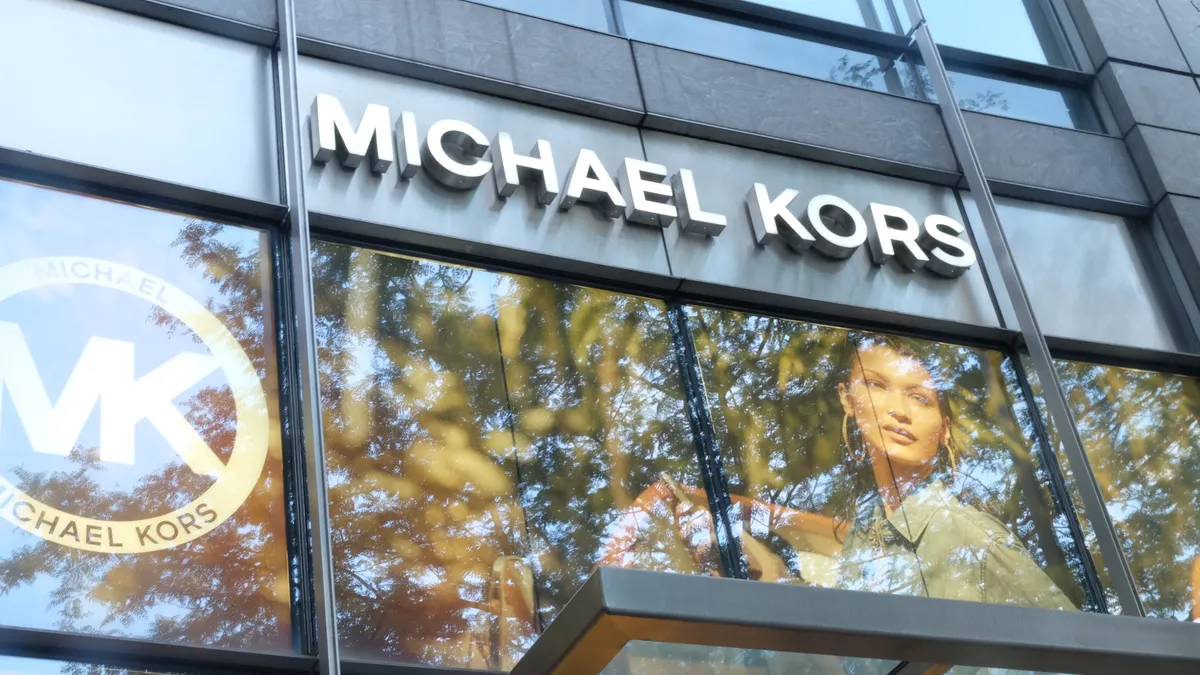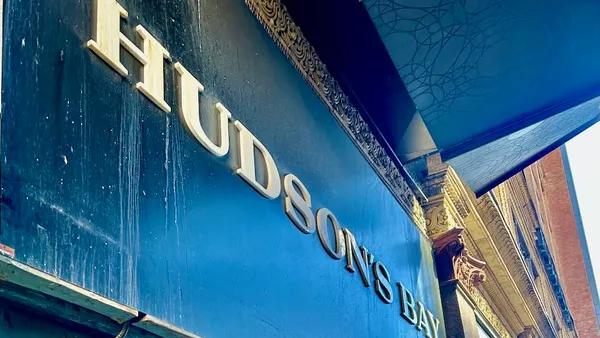Dive Brief:
-
Tapestry will acquire rival luxury fashion house Capri for $8.5 billion, the companies said in a press release Thursday. The deal joins Tapestry-owned Coach, Kate Spade and Stuart Weitzman and Capri’s Versace, Jimmy Choo and Michael Kors.
-
With a presence in more than 75 countries, the six brands last year generated more than $12 billion in sales and almost $2 billion in adjusted operating profit, per the release. Tapestry expects operating cost savings and supply chain efficiencies to generate more than $200 million in run-rate cost synergies within three years.
-
Both boards unanimously approved the plan, expected to close next year, though Capri shareholders must vote on it. Tapestry has secured $8 billion in bridge loans, and the purchase will be funded by senior notes, term loans and excess Tapestry cash, which will go to pay some of Capri’s debt.
Dive Insight:
With this deal, Tapestry catapults to a higher echelon in the luxury fashion space, though that is not without its challenges, analysts say.
Each of these companies has already accelerated its growth via major acquisitions. Tapestry, previously known as Coach, added Stuart Weitzman in 2015 and Kate Spade in 2017. Capri, previously known as Michael Kors, acquired Jimmy Choo in 2017 and Versace in 2019. On a conference call with analysts Thursday, Tapestry CEO Joanne Crevoiserat said those transformations informed the current merger.
The earlier moves also constituted an attempt to achieve the “house of brands” approach seen in Europe, which enables companies like LVMH and Kering to “exert significant power and influence,” according to GlobalData Managing Director Neil Saunders. Yet both have “remained small by global standards and lacked the heft of their European luxury rivals,” he said in emailed comments.
“The acquisition of Capri by Tapestry is the logical next step on the journey to create a global luxury powerhouse,” he also said.
Once the deal closes, the new entity will be the fourth largest luxury house in the world, with combined share of around 5.1% of the luxury goods market; in the Americas, it will be the second largest luxury player behind LVMH, with a combined share of 6%, according to GlobalData. Adding Michael Kors to its stable, which also includes Coach, makes Tapestry “the number one player in the accessible luxury handbag market in the US by a wide margin,” according to Wells Fargo analysts Ike Boruchow and Will Gaertner.
“The deal is obviously transformational for Tapestry and reshapes the landscape of the handbag space, particularly in the US,” they said.
However, these brands don’t carry the panache of those in the stable of LVMH, which includes Louis Vuitton, Dior, Fendi, Givenchy and Tiffany & Co., among others. In particular, Michael Kors and even, these days, Versace are not the height of luxury, according to Kristin Bentz, president of KB Advisory Group, who called the deal “a very interesting acquisition at a very interesting time.”
“I think it's great to have another American conglomerate of aspirational luxury brands. But I don't necessarily think that LVMH as the 800-pound gorilla was the motivator. I don't think having a Michael Kors or a Versace underneath the LVMH brand stable would fly, and this is going to sound very French, but they would never,” she said by phone. “I think it was probably perfect timing at a very dicey time in the economy for the American luxury consumer.”
GlobalData’s Saunders was more blunt regarding Michael Kors, calling it a “mess” and “a declining brand that, while well known, does not have a clear position in the marketplace and lacks the prestige of many other luxury labels.”
“As Michael Kors is by far the biggest chunk of Capri’s revenue, this will be a big problem for the new group to solve,” he said.
Crevoiserat defended the brand, saying that “it's well positioned in the market with strong consumer resonance and awareness across across customer demographics,” including a customer base that “skews slightly younger and more diverse.” But she also revealed that the Tapestry team, founder and Chief Creative Officer Michael Kors, and brand CEO Cedric Wilmotte have already discussed improving the brand experience.
“We'll work with the Michael Kors team to accelerate their view on modernizing the jet set luxury positioning and reaching out to consumers and driving engagement, improving the brand experience,” she said. “We've had conversations about their strategies around improving the brand experience. ... Those are priorities that have come up and we’ll be focused on that. At Tapestry, we're brand builders and having these six iconic brands is meaningful.”
The tie-up, which remains subject to regulatory approvals, took many analysts by surprise. But it provides Tapestry with a more diversified portfolio, both in geography and product mix, according to BMO Capital Markets Managing Director Simeon Siegel. The savings and efficiencies outlined in the companies’ announcement are realistic, though achieving them will take some work, he said in a Thursday client note.
“Synergies are always easier said than done, so this will clearly bear monitoring, but if there were ever two companies to enjoy synergies, Tapestry and Capri align,” he said.













